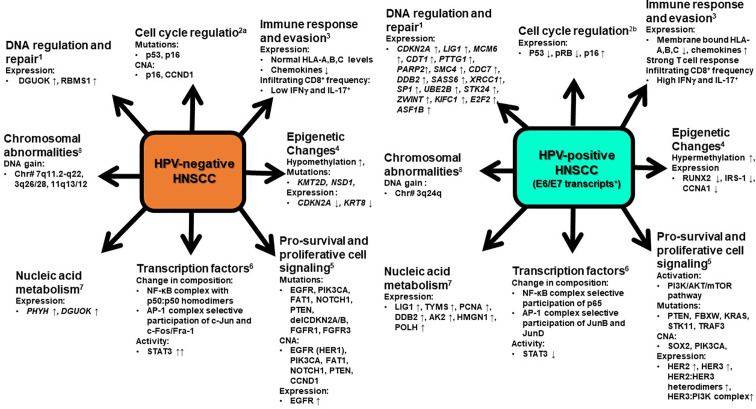Figure 2.
A snapshot of molecular signatures that distinguish HPV-positive and HPV-negative HNSCC. HPV-positive HNSCC that display specified signatures typically possess transcriptionally-active HPV infections. The changes depicted are characteristically displayed by clinically advanced HNSCC. At an early stage or at the time of viral entry all these changes are not evident in potentially malignant cells. CNA, copy number alterations, ↑ - increase, ↓ -decrease. 1. Upregulation of genes involves in DNA regulation and repair (Lohavanichbutr et al., 2009). 2. Cell cycle regulation (Van Houten et al., 2001; Hafkamp et al., 2003). 3. Varied immune response by HPV positive and HPV negative HNSCC (Nasman et al., 2013; Partlova et al., 2015). 4. Epigenetic changes (Sartor et al., 2011; Lindsay et al., 2017; Leemans et al., 2018) 5. Pro-survival and proliferative cell signaling (Chung et al., 2015; Pollock et al., 2015; Seiwert et al., 2015) 6. Modification in expression and activation of different transcription factors (Mishra et al., 2006; Gaykalova et al., 2015; Verma et al., 2017; Gupta et al., 2018). 7. Upregulation of genes involved in nucleic acid metabolism (Lohavanichbutr et al., 2009). 8. Gain in DNA of chromosome (Dahlgren et al., 2003). At an early stage or at the time of viral entry all these changes are not evident in potentially malignant cells.

